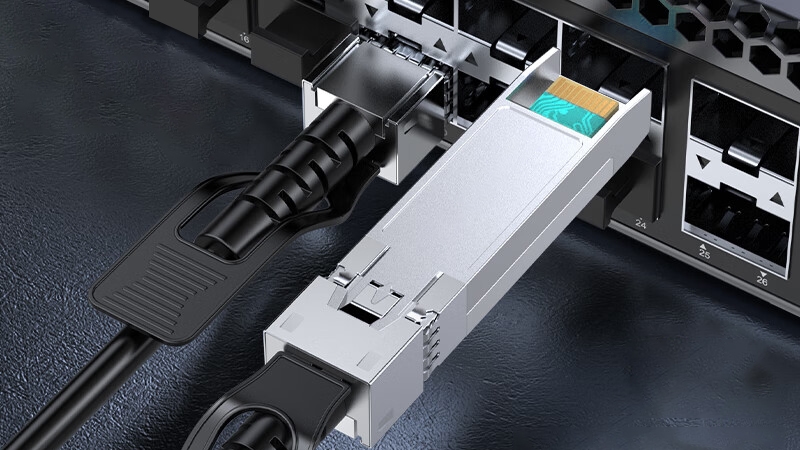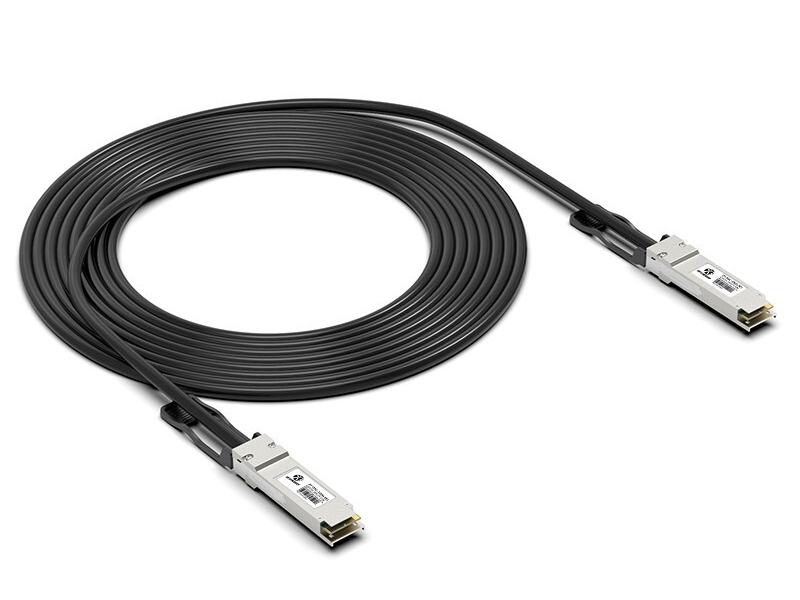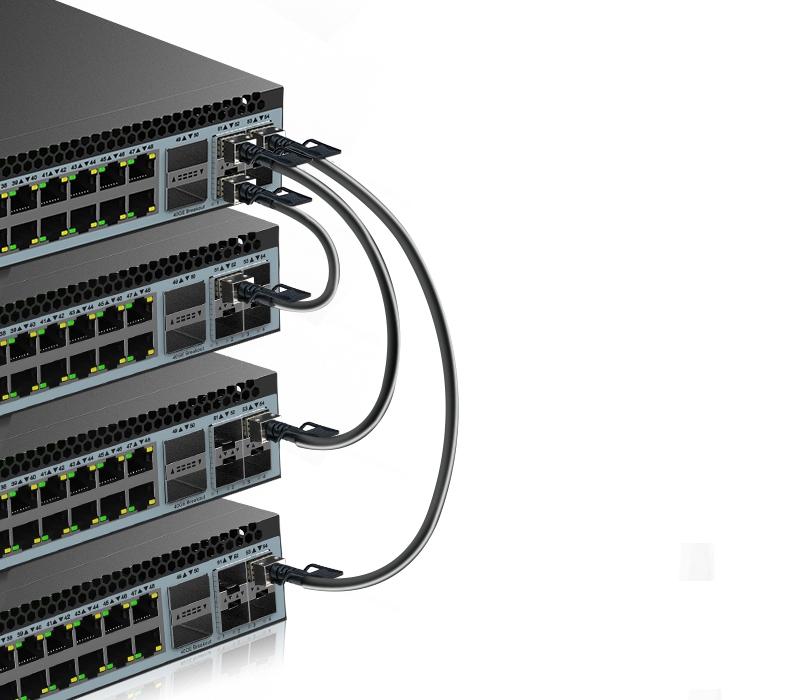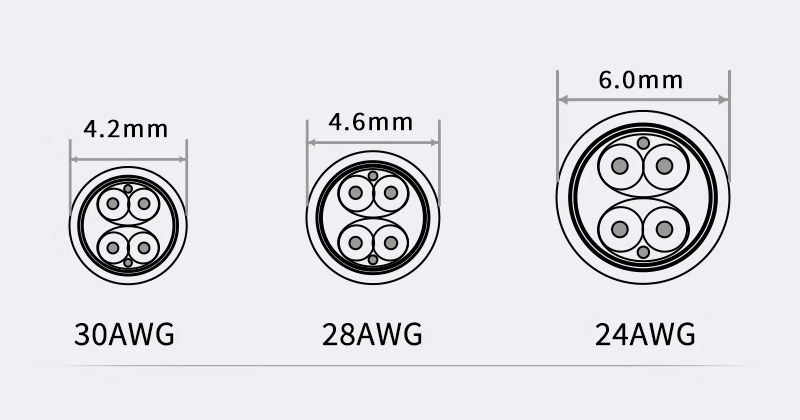DAC Cables vs Optical Modules: Best Solution for Reliable Short-Distance 10G Links

Have you grappled with the decision on whether to use copper or optical connections for short-distance 10G links? With this decision also comes the implications of not just performance but cost and what may or may not be required for maintenance. Owning the strengths and weaknesses of the cable choices—SFP+ DAC cables or optical modules—will help you streamline your decision-making process to determine which solution is best for your circumstances. By the end of our discussion, you will be able to draw a comparison between both technologies to help you make a decision without uncertain feelings. You will also be able to determine and choose the best solution to support speed and reliability, while still staying within the budget.
Why You Should Consider Choosing the Right Short-Distance Transmission Solution
Choosing the right solution for short-distance transmission will be more than simply plugging a cable in! Your choice will have implications on cost, expense, energy expenditure, ease of deployment, and more importantly, performance and return on investment (ROI). For example, you can easily settle on using an SFP+ DAC cable over an optical module today and save on capital expense, but what are you ultimately sacrificing in longevity and energy expenditure?
Cost: Generally speaking, copper-based solutions like the 10Gbe copper SFP and DAC cables boast lower upfront costs. Any cost comparisons to determine the least expensive solution must consider the cable and transceiver combination and few accessories for copper, versus a potentially more complex and costly fiber and transceiver situation. This is particularly applicable to new installations, but cost savings may fall flat in the event of increased operational costs and replacement costs as it pertains to copper usage.
Power Consumption: DAC cables are typically more power-efficient than any optical module because DAC cables simply use electrical signals over copper; there is no need to convert light signals to electrical signals. A “cheaper” solution could end up costing you in prolonged energy use due to inefficiency.
Ease of Deployment: DAC cables, by design, are easier to deploy in reference to plug-and-play. Unlike optical cables, you won’t have to worry about cleaning the fiber or correctly aligning the optics to ensure signals are established. This matters in short intra-rack applications as there often isn’t much room to properly deploy cables between racks.
Performance and Reliability: Optical modules such as 10GBASE-T-based SFPs are simply more robust against electromagnetic interference (EMI) in a noisy environment. As much as we rely on copper that’s integral to our networks, many types of cables struggle beyond a certain distance and signal degradation occurs.
ROI: DAC cables are easy to scrutinize from a financial perspective; however, if they have a short reach or could face compatibility issues in your network, you may be increasing your risk for downtime and adding in-labor hours for maintenance. Optical modules may represent a larger capital expenditure upfront but will repay back via fewer failures and extended service life.
Choosing the right transmission medium will vary network reliability and performance. A misaligned choice can either create frequent errors or even dropouts, which requires significant time and stress on IT teams to investigate, most importantly disrupting business operations. Reducing energy costs, while increasing ease of installation related to operational simplicity, will always help increase sustainability and efficiency.
To summarize, the goal will be to understand the trade-offs between the SFP+ DAC cable and the 10Gbe copper SFP options that may be best for the environment, scalability, and future growth of your network! A more cost-effective solution has the right intention, as better and more effective competition for operational success and financial soundness can be obtained through making an informed decision in total cost of ownership, versus simply per-connection costs.

In-Depth Analysis of Copper DAC Cables and Optical Modules
Copper DAC Overview
A Copper Direct Attach Cable (DAC) is a physical copper cable with transceivers on either side to connect network devices directly and does not require a separate optic for that function. There are essentially two types of copper DACs: passive DACs and active DACs.Passive DAC cables are essentially just copper wire and do not amplify the signal. They are the most cost-effective and consume the least amount of power but have a short distance limitation of around 7 meters maximum.
Active DAC cables have some electronics built in that amplify the signal and enable the cable to go out to about 15 meters. They require more power and are not as cost-effective as passive DAC cables, but active DAC cables are preferred for longer lengths because they maintain better signal integrity over longer distances.The typical models for DAC copper cables are SFP-H10GB-CU1M (1 Meter) or SFP-H10GB-3M (3 Meter) models. In a data center environment, these are the most commonly used data connections, either within a rack or between adjacent racks. DAC copper cables are preferred when cost or power consumption is a consideration.
Typical use cases are short-range, high-speed links such as connecting a switch to a server within a rack. The cost, along with the flexibility based on the fixed wire length and footprint, makes DAC copper cables the right choice where the density of cabling is a consideration. There are limitations, either physical or by design, when using copper DAC cables. The copper wire is a thicker gauge, which creates a limited bend radius for cable management, especially in tight spaces. The longer the signal travels along a copper wire, the copper electrical properties will lead to signal attenuation as the distance increases. When it comes to the reliable distance of these different types of copper DAC cables, passive DAC cables are around 7 meters in length, while the reliable length for an active DAC cable is around 15 meters.
Optical Module Overview
Optical modules use fiber inputs/outputs for the transfer of data by using light to transmit a data signal as an alternative to a copper DAC cable. The 10GBASE-T SFP+ Module is one of the more common optical transceiver specifications that are designed to support 10G Ethernet over fiber cabling or copper twisted-pair cabling.
Benefits of optical solutions:
- Further distance: Optical modules can transmit comfortably at distances of hundreds of meters or more, whereas copper cabling would not exceed their rate.
- EMI (electromagnetic interference) depression: Fibers have zero electrical noise. So, they can be deployed in environments that would otherwise be noisy situations.
- Thin/flexible cabling: Optical cabling has a smaller diameter and allows for a tighter bend. As a result, managing cables has never been easier.
Common deployments include inter-rack connections, possibly on a campus network or telecom, where distances carry slightly further than copper can reach practically. In addition to the 10GBASE-T SFP+, there are several optical standards, including SR (Short Reach) and LR (Long Reach), each optimized for distance and different fiber types.
Copper SFPs and optical modules can be compared as well.
- Copper SFP solutions combine the transceiver and cable unit into one settled unit. This can make a setup easier, though some distance is constrained.
- Optical modules separate the transceivers and fiber optics. Thus, these cabling solutions provide more modular size and distance.
In terms of the design of either solution, such as SFP-H10GB-CU1M, it can use less energy and support higher data rates with lower latency. It would typically be deployed in a reduced size and low-cost situation without reaching longer than 10-15 meters. Considering cabling, an optical module will support larger layouts with EMI resistance but also will have a higher price and power budget.

In Summary
Measuring between copper DAC cables and optical modules comes down to distance requirements, what can tolerate interference, cost, and ease of deployment. Copper DACs, such as SFP-H10GB-CU1M or SFP-H10GB-CU3M, will perform better in lower power and short-distance scenarios, as opposed to the 10GBASE-T SFP+ optical modules, which fortify a longer run distance with more reliability in areas where more EMI intrudes.
Both copper DACs and optical are equally responsible for quality 10G connectivity, and understanding these settings can prevent misunderstanding of where a solution fits into a network requirement and help avoid wasting time and energy evaluating the reliability and capabilities of either type of network media.
Detailed Performance, Cost, and ROI Comparison
When getting to the choice of using an SFP+ Direct Attach Copper (DAC) cable and an optical module, it is important to be aware of the performance, cost, and return on investment in relation to DAC and optical modules. The following points, summaries, and real-world examples should serve as a guideline for potential informed investments in networks.
Performance and Signal Quality
Test lab findings show that copper SFP solutions outperform in low latency and efficiency in their operating distance. Signal quality remains acceptable in short runs, with bit error rates (BER) near zero up to 7 meters (for passive DAC cables) and up to 15 meters (for active DAC cables).
Characteristically, optical modules, including those defined by design as 10GBASE-T SFP+ standards, are characterized by durability over longer distances, i.e., tens to hundreds of meters. Optical signal quality decreases with distance, but it is also less susceptible to electrical noise than copper, maintaining a low BER even in difficult field locations.
| Parameter | SFP+ DAC Cable (Passive) | SFP+ DAC Cable (Active) | Optical Module (10GBASE-T SFP+) |
| Max Reliable Distance | 7 meters | 15 meters | >100 meters |
| Latency | <1 µs | <1.2 µs | ~3 µs |
| Power Consumption | 0.1-0.2 W | 0.5-0.7 W | 1-2 W |
| Bit Error Rate (BER) | <10^-12 | <10^-12 | <10^-15 |
| EMI Resistance | Low | Low | High |
Price Comparison
Cost for the SFP+ DAC cable option is positively weighted toward the initial costs. Copper DACs combine both the transceiver and the cable, allowing for lower hardware costs, especially with the SFP-H10GB-CU1M and SFP-H10GB-CU3M variations.
Optical modules require buying the transceiver and the fiber cable separately, leading to increased initial capital expenditures. However, because fiber optics are typically more durable and last longer, the initial gap in costs is generally outweighed over the life of the product.
Installation and Compatibility
Copper DACs provide immediate plug-and-play installation with no concern for specialized handling of fiber; therefore, the provisioning, installation, and configuration are less complex. While the cables have a limited bend radius—which requires a little more attention in the management of the cabling—in racks, there is generally little need for concern.
Optical solutions require care in cleaning the connector, as failure to do so can result in signal loss upon deployment. However, the flexible design of fiber optics and EMI resistance can make for more complex cabling runs and arrangements.
Hybrid Positioning Deployment Model
A multinational data center was able to optimize both performance and cost by deploying a hybrid strategy. They deployed SFP+ DAC cables within racks for fast connections with low latency. For the inter-rack links, they deployed 10GBASE-T SFP+ optical modules to ensure long-distance communication without concern of EMI.
In total, this model was able to achieve a total of twenty percent power savings and fifteen percent savings on overall networking hardware costs—without sacrificing performance, signal integrity, or uptime. Ultimately, the client’s approach was to find a balance between an immediate capital expenditure and ‘future-proofing’ their network architecture.
Final Thoughts
- Copper DAC cables perform best on shorter runs—with low cost, power, and minimal latency.
- Optical modules outperform on longer distances and noisier environments but are higher in cost and power usage.
- Hybrid models leverage both for reliable, scalable 10G networks.
After weighing all of the differences and considering unique lab data and practical deployed models, the optimal way to make a decision between an SFP+ DAC cable and copper SFP options is to match the specific need with the application and environment.
 Best Practices for Procurement, Deployment, and Management of DAC and Optical Solutions
Best Practices for Procurement, Deployment, and Management of DAC and Optical Solutions
The process of selecting and managing SFP+ DAC cables and 10GbE copper SFP solutions should be done systematically to ensure compatibility, ease of deployment, and longer life expectancy.
Compatibility and Vendor Selection
It is essential to check for hardware compatibility between switches, servers, and cables before making a purchase. Sometimes, different vendors have small differences in their cables, which can affect compatibility. By dealing with known vendors that can certify their cables on specific equipment models, your chances of experiencing compatibility issues that may cause downtime or a degraded experience are diminished.
A properly structured inventory management process is also essential for tracking the cables by type, length, and transceiver. Labeling cables and tracking their serial numbers in a database will aid in troubleshooting and future upgrades.
Deployment Considerations
Proper handling of cables can have a significant impact on the lifespan and performance of the cables. When deploying DAC or optical cables, use this simple best practice guide:
- Respect the minimum bend radius of the cable type to avoid damaging the inside of the cable. Unfortunately, copper DAC cables are generally thicker, so extra caution should be taken.
- For optical module types, ensure the end connectors are clean and free from dust. Fiber optic cleaning kits should be used regularly as dirt can significantly impact the optical quality of the connection.
- It is also critical to consider the environment around the cabling. For example, avoid placing the copper SFP cable near electromagnetic interference to the strongest extent possible.
Maintenance and Troubleshooting Guidelines
Regular inspections can help identify the early warning signs of wear, microbial damage, or degraded signals in the cable assembly, so performing regular inspections is important. Again, pay close attention to the connectors for “green stuff” corrosion or connector loosening. Finally, use diagnostic testing tools to verify link performance at set intervals for these cables.
As with most issues that arise with cabled infrastructure, there are common troubleshooting approaches. Verify the symmetry of link speed to be negotiated, and simply confirm the mating duplex type of the SFP cable to the designated port while troubleshooting should suffice. For example, using DAC cables that are either passive or active with devices that are not compatible results in connection failures.
By paying close attention to the purchasing of cards, handling, cleaning, and maintenance, operators can maximize the utility and longevity of their network’s SFP+ DAC cables and 10GbE copper SFP deployments and keep their network healthy and cost-effective over time.

FAQS
What are the differences between DAC cables and optical SFP modules?
DAC cables use copper to transmit electrical signals, which results in low latency and low power. Optical SFP modules focus the light through fiber optics, making it easier to transmit over longer distances with more resistance to EMI.
Which is better for short-range 10G links?
Under 7–15 meters, an SFP+ DAC cable is by far the best choice because of cost and power consumption. Optical modules are better for longer runs or heavy interference.
Are there potential interoperability problems with a DAC cable?
Yes, this could depend on the matching of the cable type to the specifications of the device. Passive DAC cables and active DAC cables may work on some devices or not. You still need to check the vendor’s support for the cables.
How do DAC cables compare with power consumption in optical SFP modules?
Copper SFP cables use less power, often using less than 0.2 watts. Optical modules are usually above 1 watt because they have to use a laser to transmit.
What is the maximum length for reliable use for either copper cables or optical SFP modules?
Copper DAC cables are generally valid up to 7–15 meters, while optical will go over 100 meters depending on the type of fiber and model of SFP.
When should I use an active DAC cable instead of a passive SFP DAC cable?
You should use active DAC cables at about 7 meters and beyond (actually closer to about 15m), where the quality of the signal needs to be boosted for use.
Can optical modules with DAC cables be used in the same network?
Of course. Most networks are hybrid deployments with DAC cables in the racks and optical modules across racks or rooms to balance cost and performance.
What are common issues when troubleshooting DAC connections and optical configurations?
Connector dirt on optics and bent cables or incompatibility in DAC cable problems are common issues. Check connectors and clean regularly or check compatibility to avoid failures.
What considerations are there with costs?
The copper SFP+ DAC cables have less to buy with limited reach. The optical modules have ongoing costs, which are higher, but have the advantage of scaling up, and even though the upfront cost is higher than a copper SFP, you will be better in the future and avoid replacing things if they run out of support.
Are optical modules going to be future-proof better than copper?
Generally, yes. Optical technology supports greater speeds and longer distances better than copper cables, which will align with future demands.
The SFP+ DAC cable FAQ and 10GbE copper SFP FAQ are just some of the questions we have covered in detail to help you make solid decisions when choosing between copper or optical options for high-speed, short-range links.
Conclusion
The choice between an SFP+ DAC cable and a 10GBASE-T SFP+ module really comes down to distance, environment, and cost to deploy. DAC cables are for short, low-power connections, and optical modules are for longer distances, where they will avoid EMI as well. Reaching out to experts and reviewing options helps make certain you can build a cost-effective and reliable network that can grow in the future.

 Best Practices for Procurement, Deployment, and Management of DAC and Optical Solutions
Best Practices for Procurement, Deployment, and Management of DAC and Optical Solutions